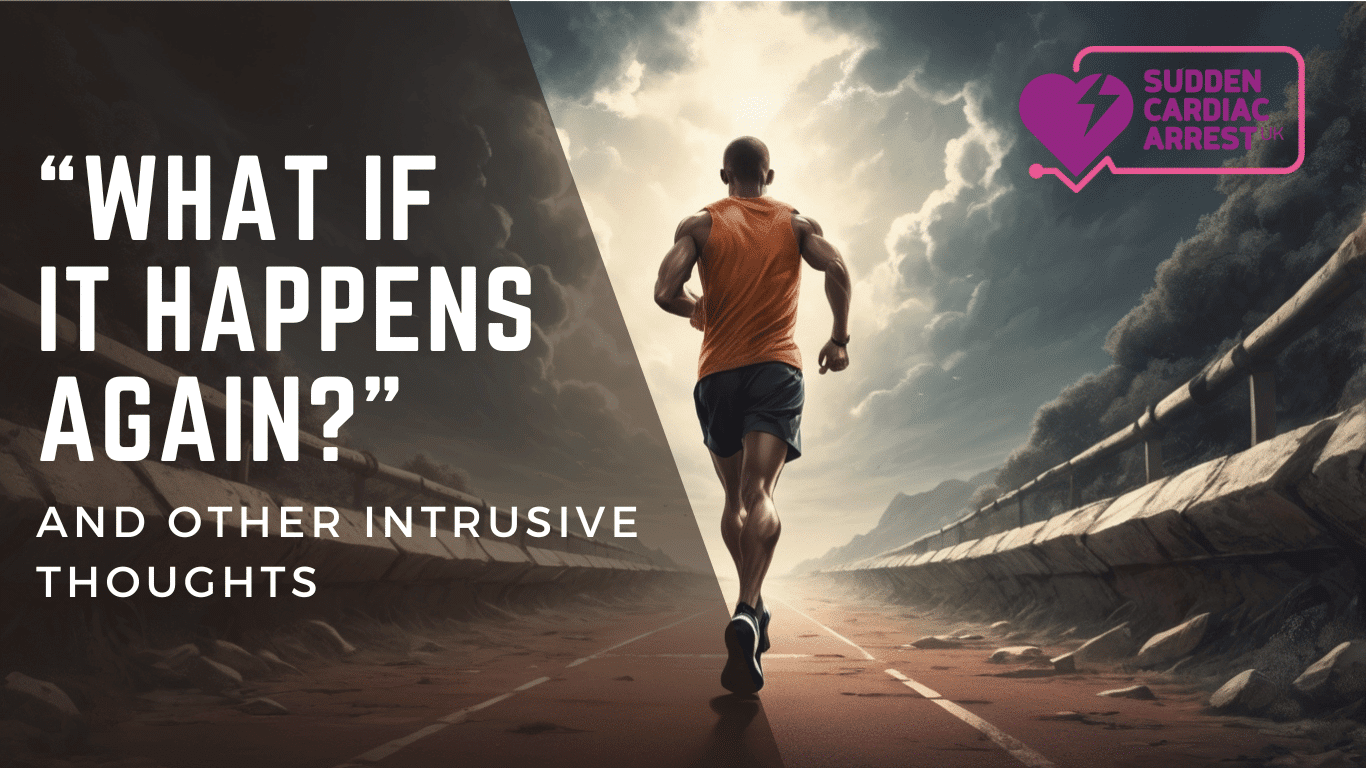If you’re like me and other survivors, once you’ve returned home from hospital and life begins to settle down, you begin to think about what happened to you. For most of us, our sudden cardiac arrests came out of nowhere: uninvited and unexpected. We came perilously close to not being alive and, for me at least, left with the feeling of having had no control over the arrest or its outcome.
Once home and alone, I began to wonder, “Will it happen again?”
Thoughts

On average, research indicates we have about 4,000 thoughts during the 16 hours or so that we’re awake each day. While most of these thoughts are purposeful, such as “I’d better get moving, or I’ll miss the bus” or “Where did I leave my coffee cup?” about 13% are spontaneous – they just seemingly spring out of nowhere. For me, thinking I might have another sudden cardiac arrest or, rather, I was going to have another sudden cardiac arrest became more than just one of those 520 spontaneous thoughts I had each day.
Sometimes, these thoughts were triggered, for example, by a premature ventricular contraction or “missed heartbeat” (in most circumstances, a benign and normal occurrence) while I was running. More often, though, these thoughts seemed to pop out of nowhere, like the cardiac arrest itself.
They were intrusive, unwanted, and felt uncontrollable.
Avoiding these thoughts and what triggered them became the strategy.
Paradox

Avoiding thoughts wasn’t as easy as it sounded. It turns out that the more you try to suppress a thought, the more difficulty you’ll have.
It’s a paradox.
Let me explain.
Under normal circumstances, we don’t pay attention to many of the 520 or so spontaneous thoughts we have each day. Otherwise, we’d be overwhelmed by trivial intrusions. The part of the brain controlling executive functions does a pretty good job of deciding what is and isn’t important to attend to at any given moment.
It filters out random, spontaneous thoughts from our attention so that we can complete our current tasks. They come and go quickly. However, the act of suppressing a thought focuses and heightens attention on the suppressed thought, which is counterproductive.
Now the brain’s executive function is actively involved in paying attention to the thought I wanted to suppress. I’ve engaged it in monitoring for the thought so that I can consciously suppress it.
Thus, the paradox.
More such thoughts.
Distracting thoughts can achieve the same paradoxical outcome.
Trying to re-focus your thoughts on a pleasant experience can build a link or association between that memory and the thought you want to suppress. Eventually, being reminded of your wonderful vacation in Spain can bring up the “I could have another sudden cardiac arrest” thought.
Suddenly, the sunny Spanish vacation isn’t such a pleasant memory.
It’s about fear, guilt and death.
I Could Die

If suppressing the thought isn’t effective, what is?
One of the keys is simply recognising what’s going on: you have a spontaneous thought that provokes a negative emotion, and you react. The thought, “What if I had another sudden cardiac arrest?” leads to feeling fearful and then the thought spiral of “I could die” and all the images and guilt that entails.
Stop, recognise the cycle and accept it.
You know the intrusive thought will spark the negative emotion and spiral of afterthoughts.
Remind yourself, out loud or in your head, that you’ve experienced this cycle before and may yet again.
Don’t dwell on it.
Just accept that it is happening: “Oh, this again, but I’m still here.”
In time, the power of the cycle will diminish and disappear the less you fight it and the more you recognize and accept it. As time passes, you will gain experience and gather evidence that you’re not going to die from another sudden cardiac arrest.
After all, you’re still alive.
Epiphany

For me, running made this epiphany come sooner: I couldn’t fathom walking all the way home after a “missed heartbeat” scare, so I’d stop for a bit, check my pulse and continue running.
So, I continued running and didn’t die.
It’s what psychologists call “exposure” therapy, in that I inadvertently exposed myself to an activity that might contribute (at least in my mind) to another cardiac arrest. The intrusive thoughts began to appear less often, and they lost their power over my emotions. I broke the cycle.
If intrusive thoughts are compromising your day-to-day functioning and enjoyment, cognitive-behavioural therapy (or CBT) offers the potential for great relief. Find someone with experience using CBT for intrusive thoughts.

Canadian, Athlete and SCA Survivor


Great article! Thanks Ted.